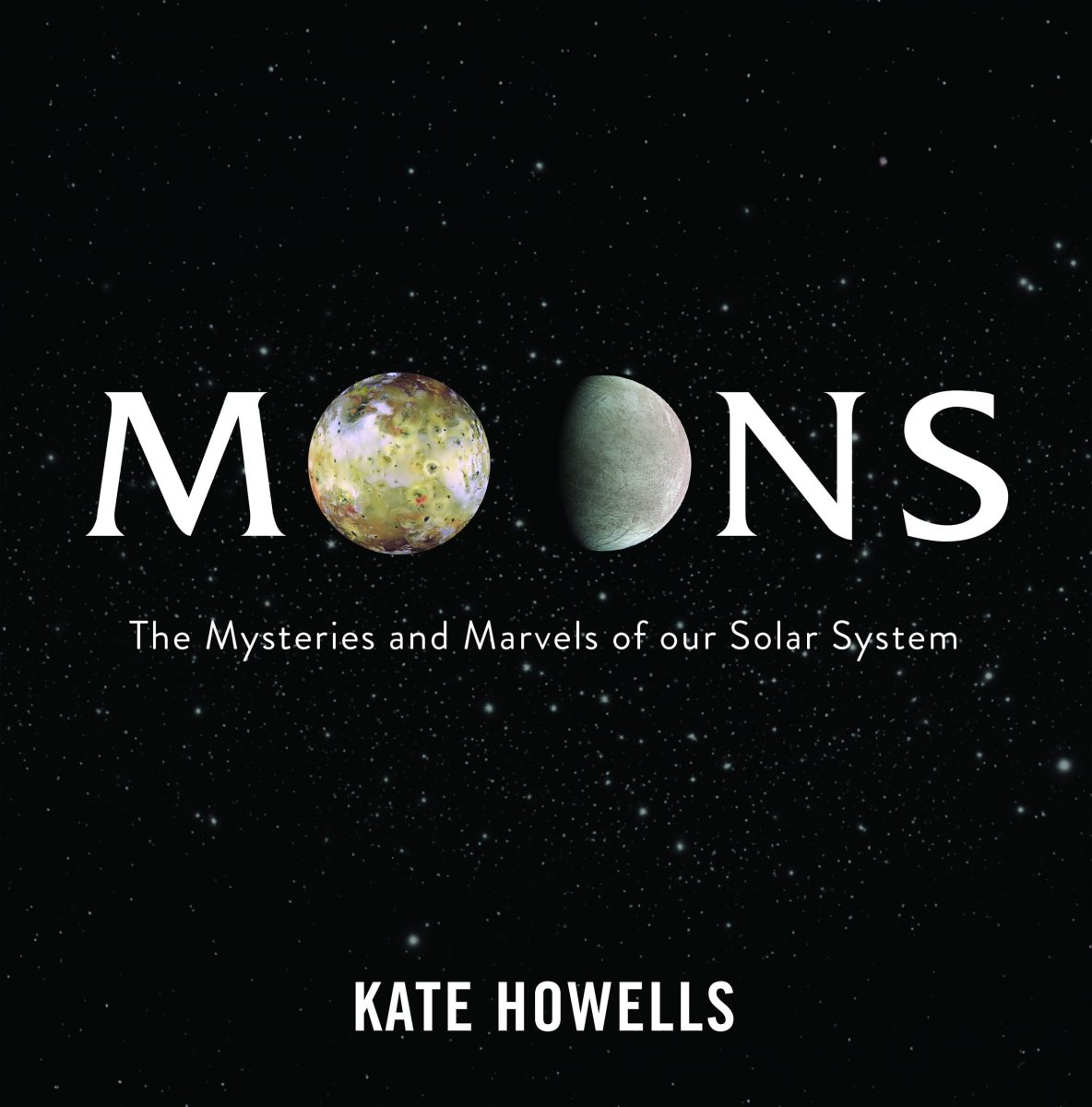
In Moons, astronomer Kate Howells takes you on an interplanetary voyage to explore the mind-boggling moons of our solar system. Photo: Supplied.
How majestic, yet eldritch, is our solar system. Discovering its mysteries and marvels, in the pursuit and application of knowledge and understanding, is not only fascinating, but amazing. It’s difficult to find the perfect words to express awe: from ethereal to luminous!
Let astronomer Kate Howells take you on an interplanetary voyage to explore the mind-boggling moons of our solar system, from the volcanic hellscape of Io to the ice mountains and methane seas of Titan.
Moons is beautifully illustrated with space photography and artistic elucidations, and filled with astonishing facts about our own galactic backyard. We know the moon is an astronomical body that orbits Earth as its only permanent natural satellite. Basically, the moon is neither a star nor a planet, though it is always by Earth’s side and rotates with us synchronically as a satellite.
For people just getting interested in space, the seemingly small step from learning about planets to learning about moons is a giant leap. The universe seems to become much bigger and fuller when you realise that around those eight big worlds are hundreds of fascinating – albeit smaller – new worlds to discover.
The moon is a beautiful object in the night sky, representing serenity, balance and harmony. Moons is intelligent, perceptive, encapsulating and educational.
That combination of nature’s ability to be awesome and our ability to figure out and appreciate that awesomeness is what makes space exploration so extremely cool,” Howells writes. “And it’s wonderful to know that as knowledge builds on itself, our technologies continue to advance.
“At some point in elementary school, everyone learns the names of the planets. You probably learned key facts about each one: Jupiter is the biggest, Mercury is the smallest (post-Pluto demotion), and Saturn has rings. You were almost certainly already familiar with the Earth’s Moon, and maybe your teachers had you sketch out its phases and draw its craters. But for most students, other moons aren’t on the syllabus.
“A lot of people may not really know what a moon is. A famous example of this is a clip from a shopping-channel show that went viral a few years ago. The two hosts are talking about a pattern on a cardigan, and one says, ‘It almost kind of looks like what the Earth looks like when you’re a bazillion miles away from the planet Moon.’ This nonsensical comment then sparks a conversation that exposes the hosts’ total confusion about what’s that in space…”
The back-and-forth probably represents the slightly more uninformed side of the proficiency spectrum. The truth is that the vast majority of people don’t need to know things about space to get by in their day-to-day lives.
While the process of doing science as a professional scientist may not be for everyone, learning things about the world around us – about the “weird and beautiful reality we live in” – is something everyone can do.
That’s why Howells finds the moons of the solar system “are my favourite low-hanging fruit when it comes to new, awesome things to discover in space. You don’t need any kind of skill or background in science to appreciate how extraordinary it is that there’s a moon with volcanoes that blast lava right out into space, another that has massive dunes of sand that look like coffee grounds, and another that might have life swimming in an ocean underneath a kilometres-thick shell of ice.
”And even if you already know a bit about a few moons, or even about most of them, there’s still a wealth of information to dive deeper into. I’ve been working in the space field for a decade, and there were still new and staggering things that I learned while researching this book.
“And with an array of telescopes and spacecraft out there exploring the solar system right this second, there are always new discoveries being made.”
Observation, explanation, comprehension!
Moons, by Kate Howells, Pantera Press, $45



